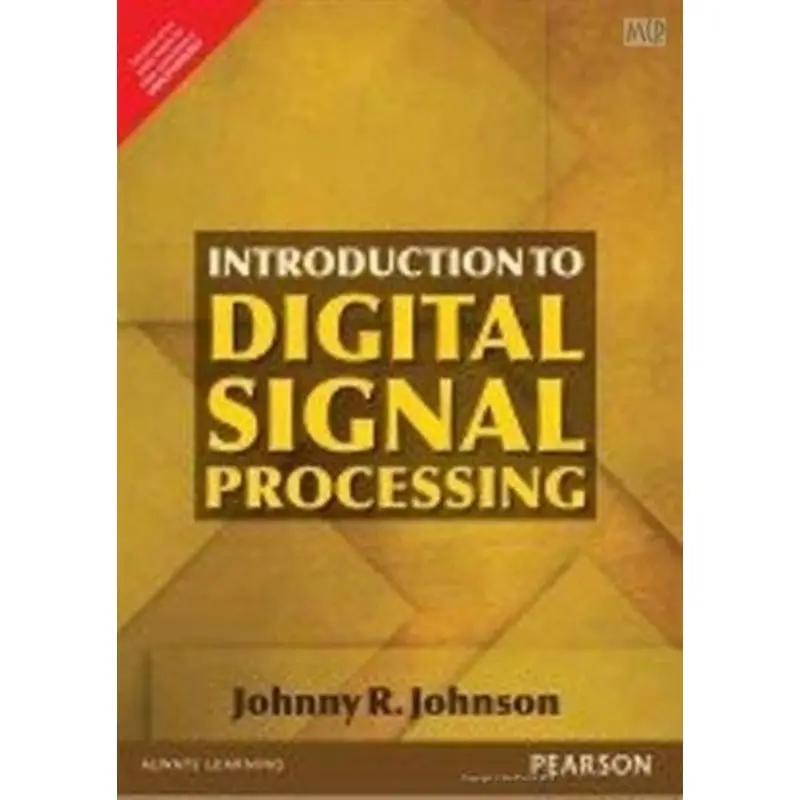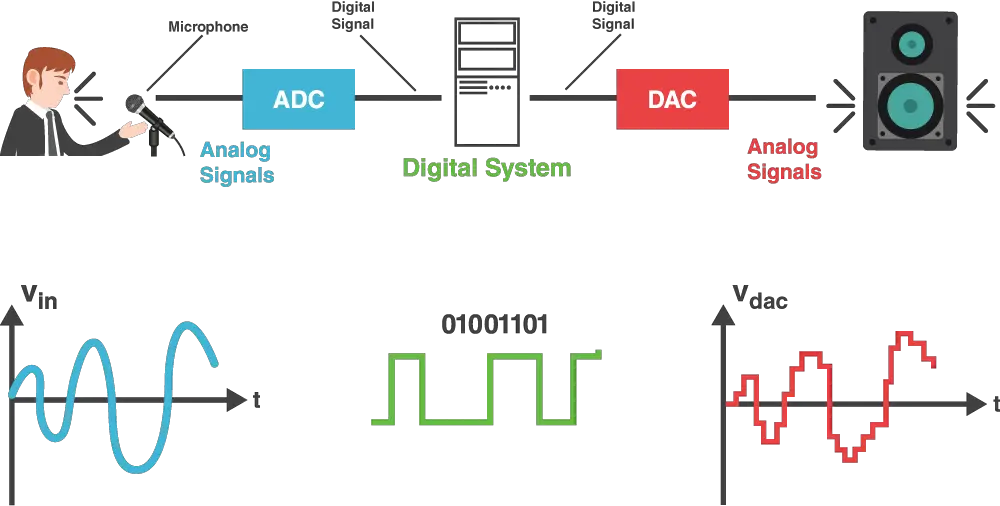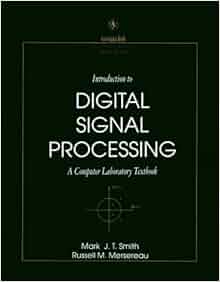An Introduction to Digital Signal Processing for Programmers

Digital signal processing (DSP) is a field of engineering that deals with the processing of discrete-time signals. These signals are typically represented in the digital domain, where they can be manipulated using mathematical operations. DSP has a wide range of applications, including audio processing, speech processing, image processing, and medical signal processing.

For programmers, DSP can be a valuable tool for developing applications that can interact with the real world. For example, DSP can be used to create audio filters, process images, and control robots.

One of the most important concepts in DSP is the Fourier transform. The Fourier transform is a mathematical operation that can be used to decompose a signal into its constituent frequencies. This decomposition can be used to extract features from the signal, such as the pitch of a musical note or the location of an object in an image.
Another important concept in DSP is filtering. Filters are used to remove unwanted noise from a signal. There are many different types of filters, each with its own specific characteristics.
Programmers can use DSP techniques to develop a wide range of applications. These applications can be used in a variety of fields, including music, medicine, and robotics.
Here are some of the benefits of learning DSP for programmers:
- DSP can help programmers to develop a deeper understanding of how the real world works.
- DSP can be used to create a wide range of applications that can interact with the real world.
- DSP can help programmers to develop new skills that can be used in a variety of fields.# An Introduction To Digital Signal Processing For Programmers
Executive Summary
Digital signal processing (DSP) is a rapidly growing field that has applications in a wide variety of industries, including telecommunications, audio engineering, and medical imaging. DSP involves the use of digital computers to analyze and process signals that are represented in digital form. This can be used to improve the quality of signals, extract information from them, or control systems based on their input.
Introduction
DSP is a vast and complex field, but it is also a very rewarding one. Programmers who are proficient in DSP can develop innovative solutions to real-world problems. This article provides a brief introduction to DSP, covering the basics of digital signal processing, some of the most important subtopics, and some of the applications of DSP.
Five Key DSP Subtopics
- Discrete-time signals: Discrete-time signals are signals that are defined at specific points in time. They can be represented as a series of numbers, which can be processed by digital computers.
- Digital filters: Digital filters are used to remove unwanted noise from signals. They can also be used to enhance specific features of a signal.
- Fourier analysis: Fourier analysis is used to decompose signals into their constituent frequencies. This information can be used to identify patterns in signals and to develop algorithms for processing them.
- Wavelets: Wavelets are mathematical functions that can be used to represent signals at different resolutions. This makes them ideal for processing signals that have both high-frequency and low-frequency components.
- Machine learning: Machine learning can be used to develop algorithms that can automatically learn from data. This can be used to develop DSP algorithms that can adapt to changing conditions.
Important Concepts
In addition to these subtopics, there are a number of important concepts that are essential for understanding DSP. These include:
- Sampling: Sampling is the process of converting a continuous-time signal into a discrete-time signal.
- Quantization: Quantization is the process of converting a continuous-amplitude signal into a discrete-amplitude signal.
- Aliasing: Aliasing is a phenomenon that can occur when a signal is sampled at too low a rate.
- Windowing: Windowing is a technique that is used to reduce the effects of aliasing.
- Correlation: Correlation is a measure of the similarity between two signals.
- Convolution: Convolution is a mathematical operation that is used to combine two signals.
Applications
DSP has a wide variety of applications in a number of different fields. Some of the most common applications of DSP include:
- Audio engineering: DSP is used to improve the quality of audio signals. This can be done by removing noise, equalizing the frequency response, and adding effects such as reverb and delay.
- Telecommunications: DSP is used to process signals in telecommunications systems. This can be done to improve the quality of voice and data transmissions, and to reduce the effects of interference.
- Medical imaging: DSP is used to process medical images. This can be done to improve the quality of the images, to extract information from them, and to develop algorithms for diagnosing diseases.
Conclusion
DSP is a powerful tool that can be used to solve a wide variety of problems. Programmers who are proficient in DSP can develop innovative solutions that can improve the quality of life for people around the world.
Keyword Phrase Tags
- Digital signal processing
- Discrete-time signals
- Digital filters
- Fourier analysis
- Wavelets
- Machine learning

Nice article
This article is very helpful
I can’t understand this article
This article is not very well written
I have a question about this article
I disagree with the author’s opinion
This article is very ironic
This article is very sarcastic
This article is very funny
This article is very well written